Texturing form

Let's see how a texture works using this ball with spots.
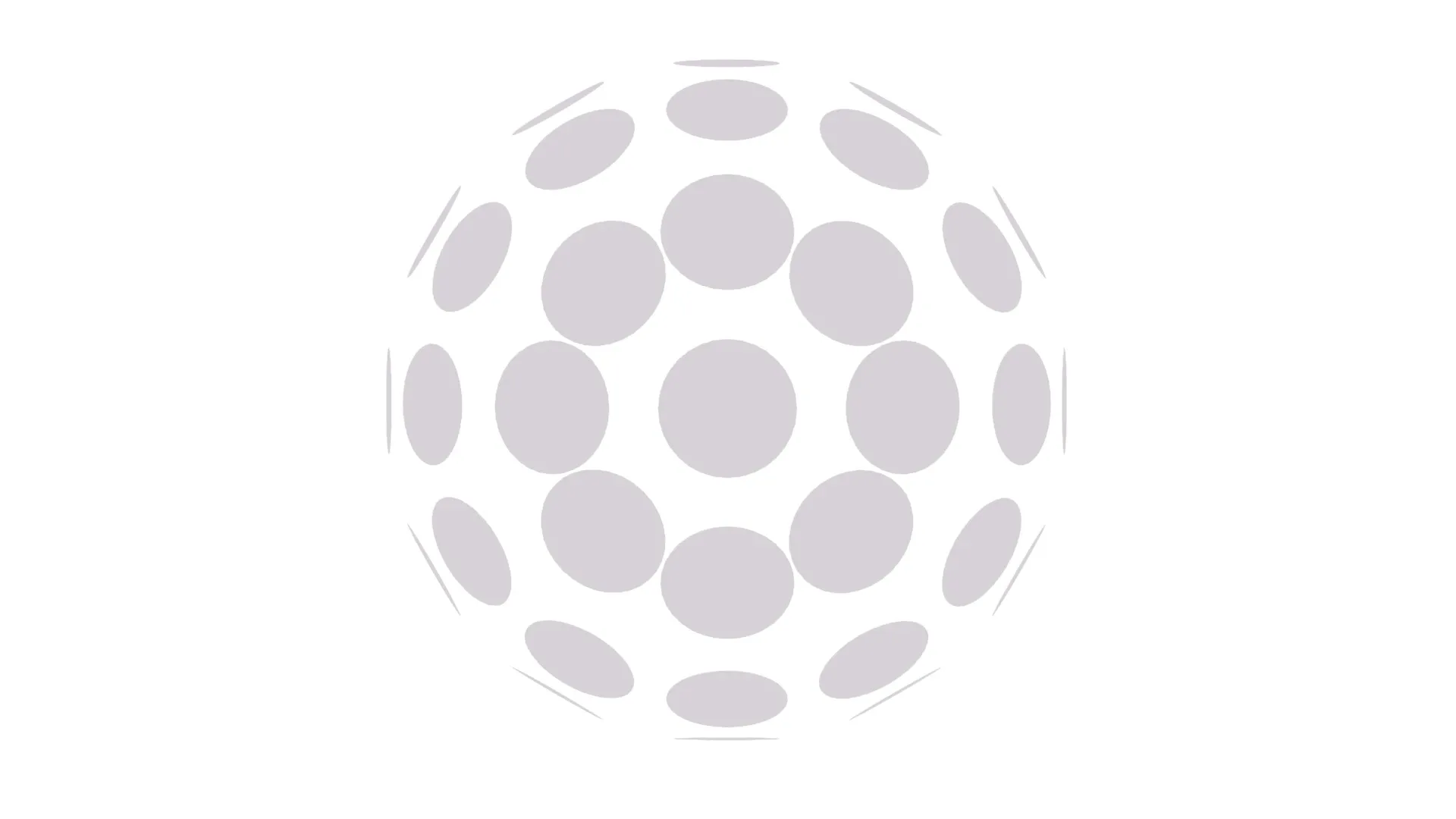
The spot facing us directly will be undeformed.
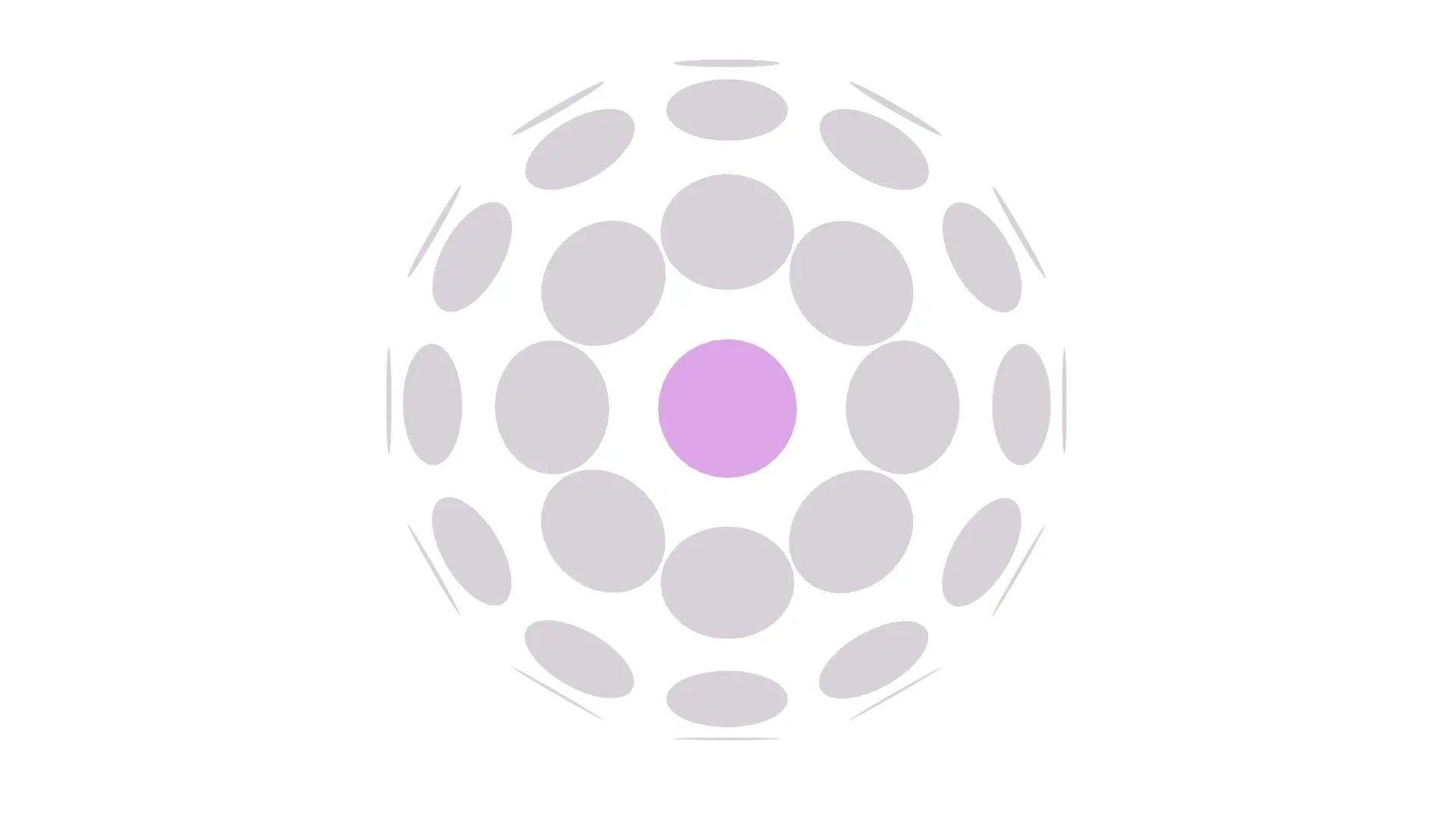
A spot turning away will appear squished in that direction.
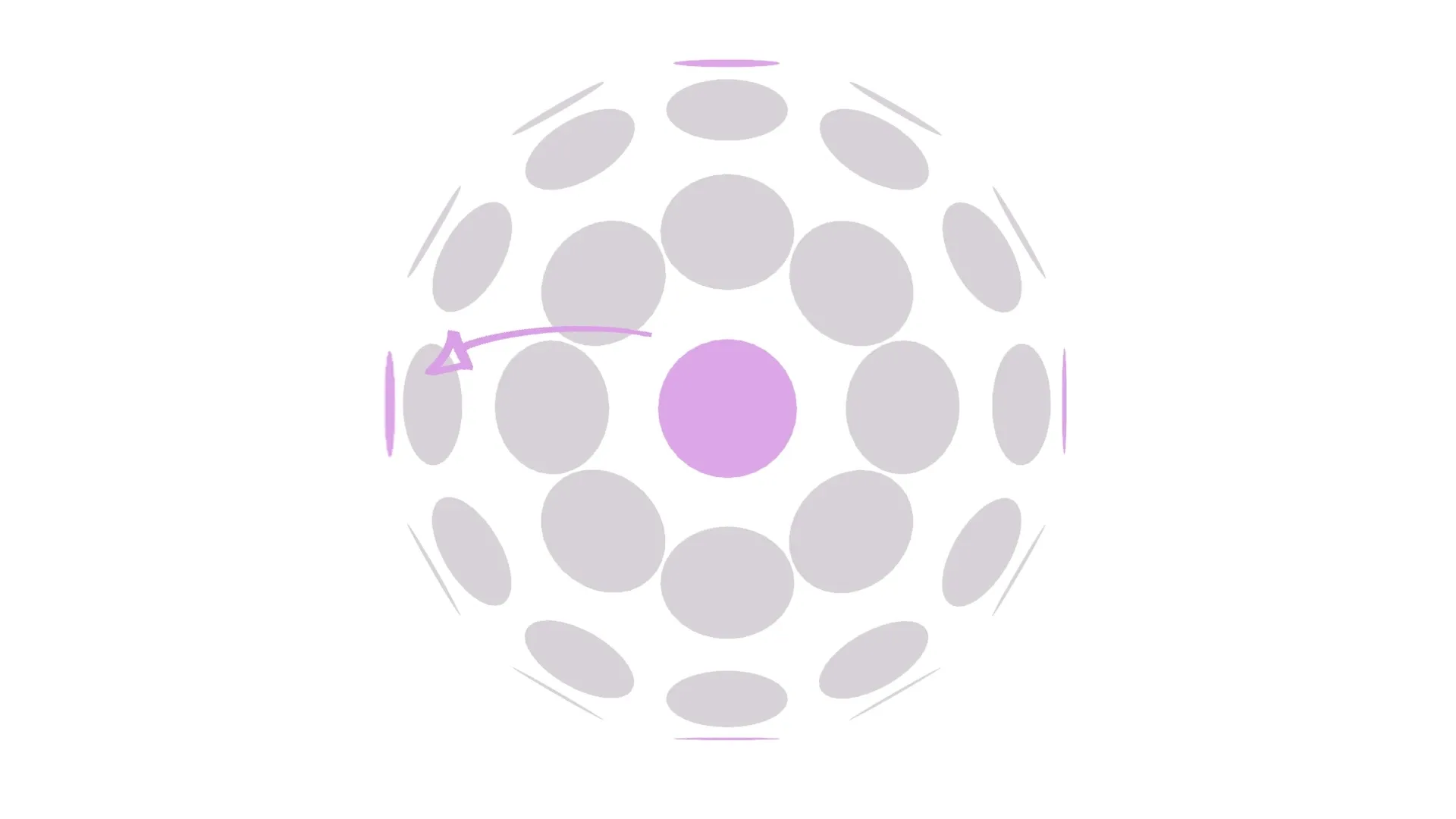
Fill in the rest with gradually squished ellipses, and the ball is complete.
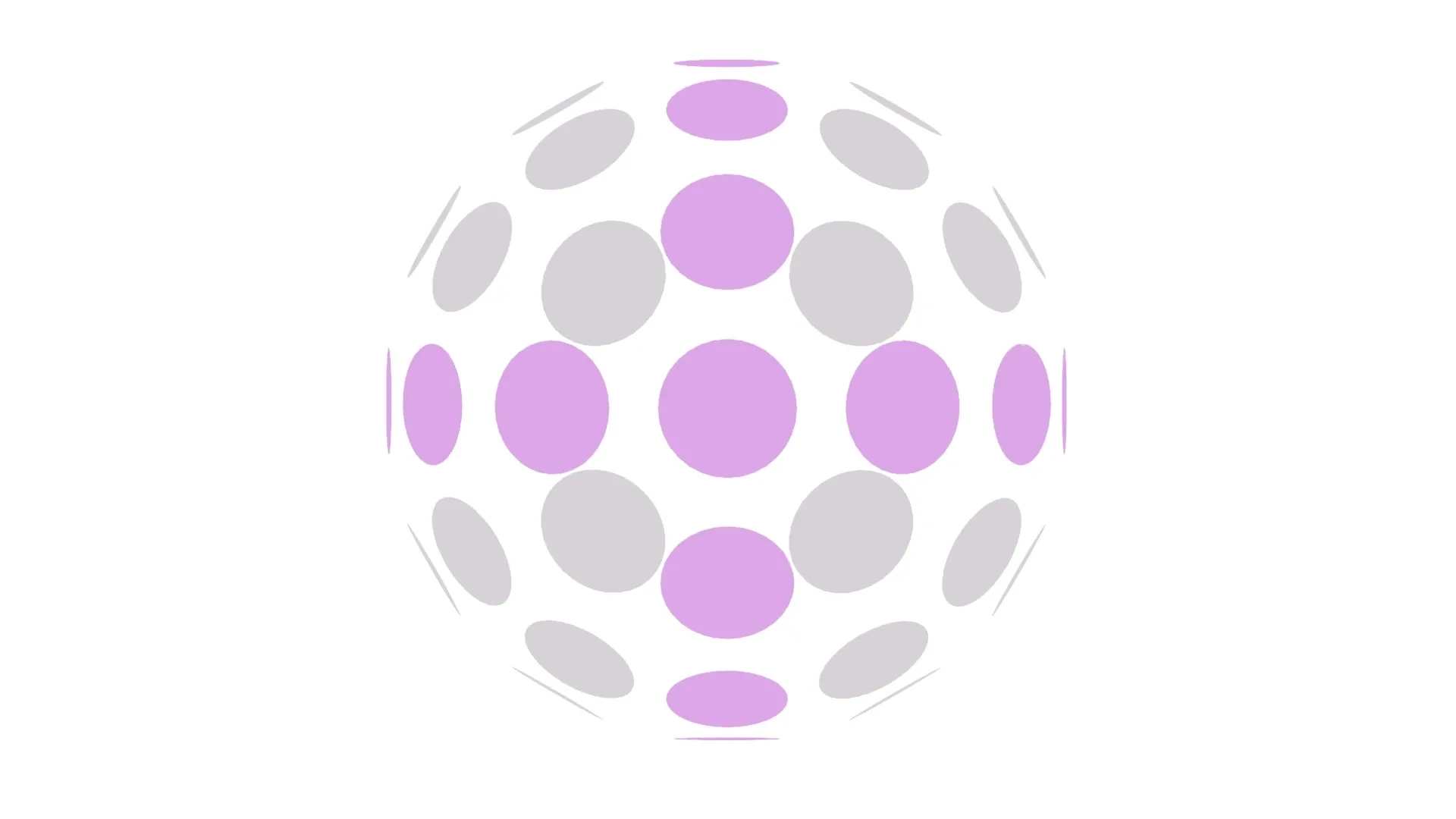
Let's take scales for example, and place them on the pattern we've just created.
Don't forget scales are small forms themselves, which means they'll also have volume and overlaps - especially close to the silhouette.
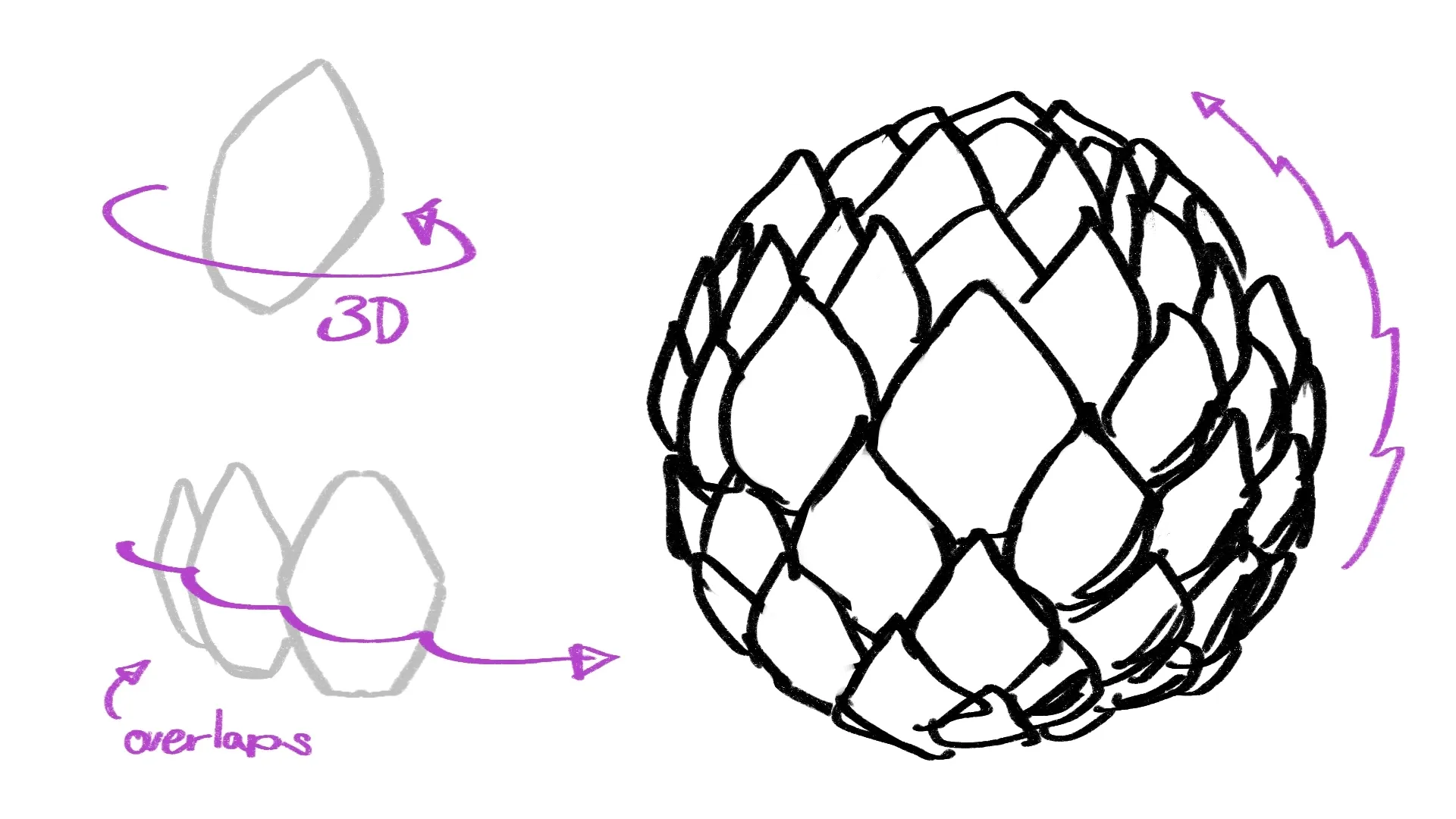
Wood, skin or rock all have different small forms (round, long, spiky) arranged in different patterns (diamond, straight, zig zag...).
The principles are always the same:
- A texture is made of small forms on the surface of a larger form.
- As the surface turns away, the texture deforms with it.
Intensity
Which scaly pinecone do you like more?
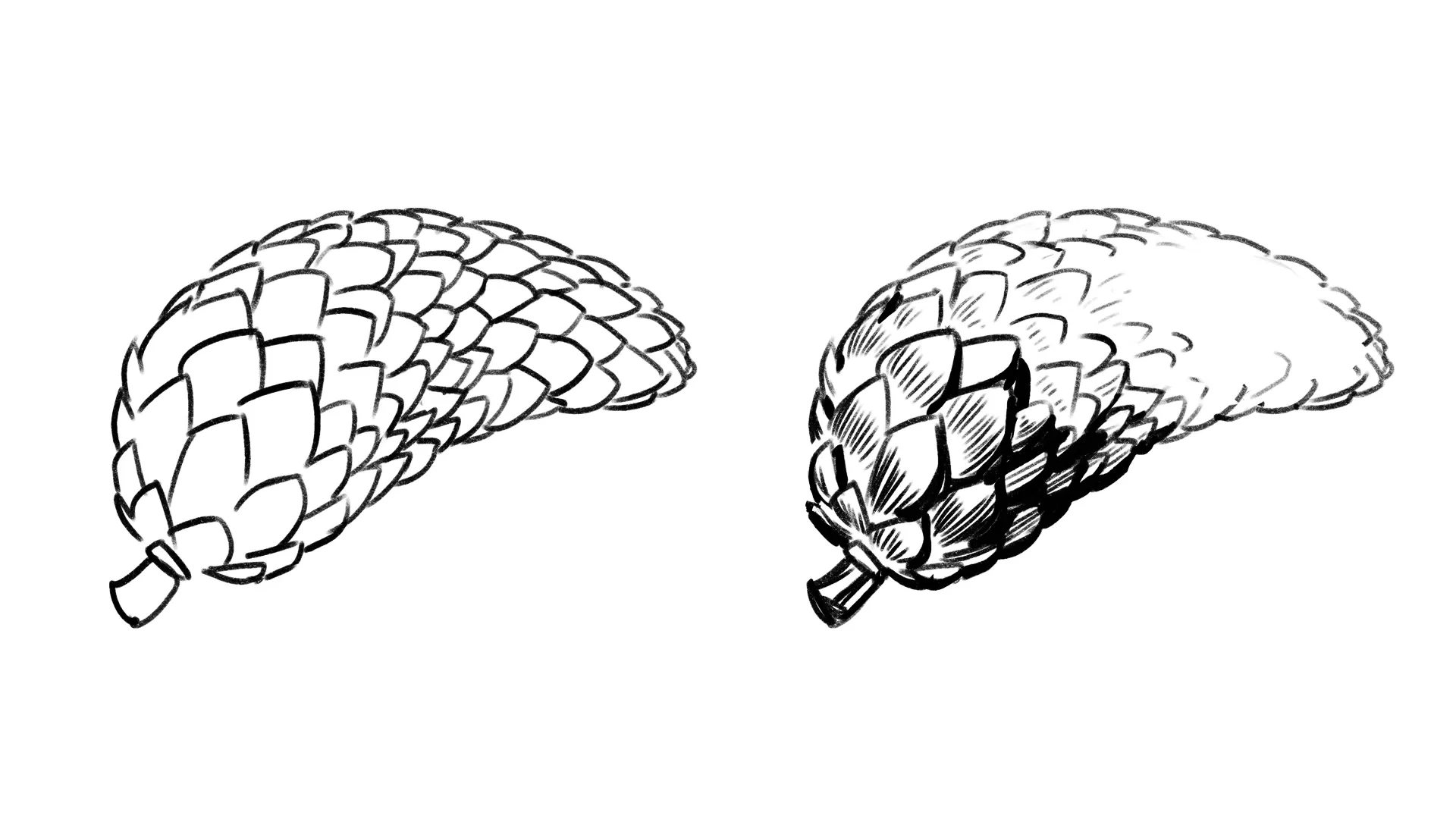
Having less work isn't the only benefit the right pinecone offers.
When you pick one interesting spot ("focal point") to accentuate, you give your viewer a clear guide on where they should look first.
Adding texture everywhere evenly can flatten the drawing - if everything is important, then nothing is.
To do this, whenever studying a new texture, make sure you can also control its intensity from pitch black all the way to white.
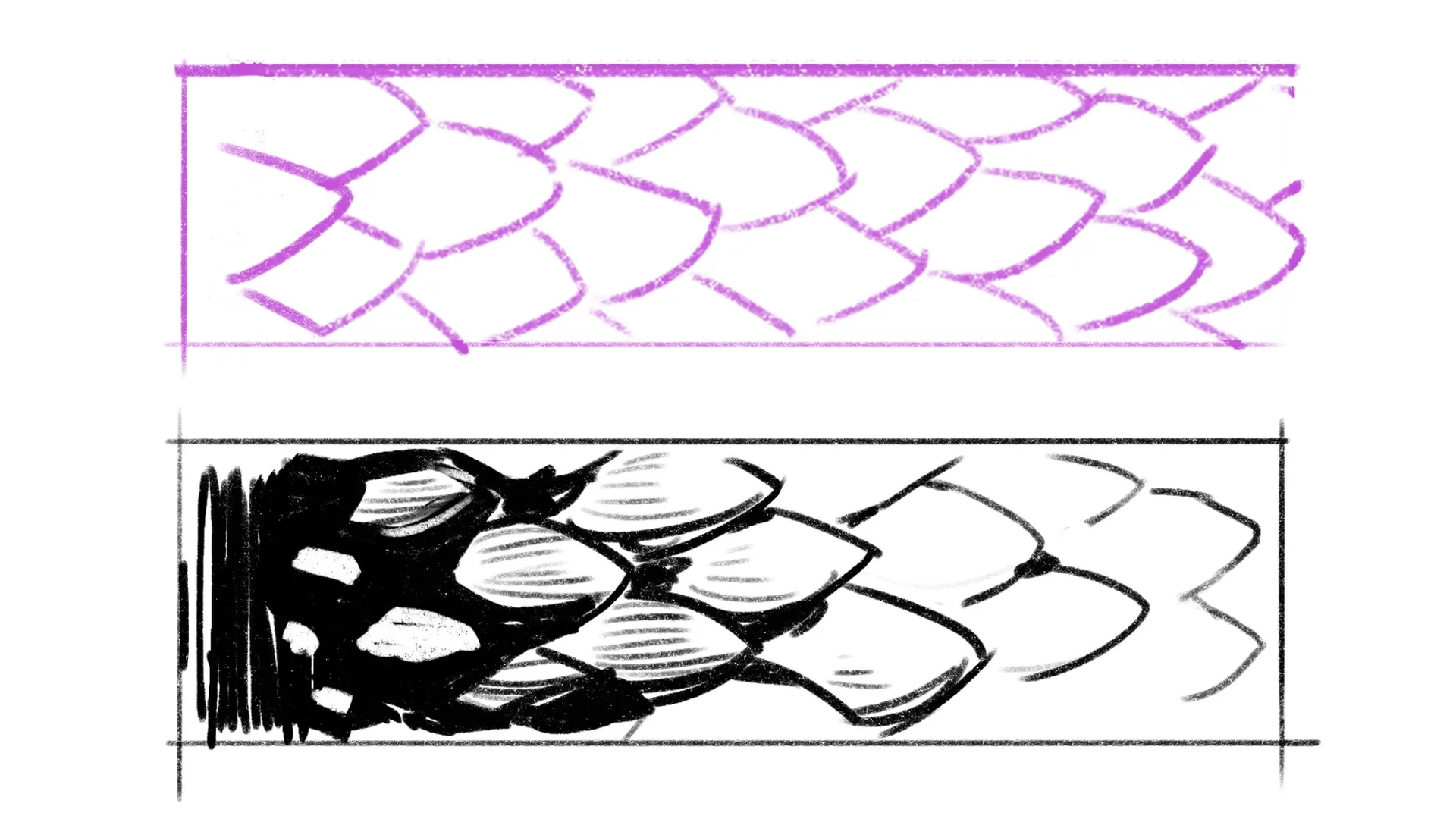
Summary
- A texture is a combination of a small form and its distribution on a surface.
- Texturing has many uses in a drawing:
- Describing form & light
- Telling the viewer what's important and what isn't
- Creating a 'finished' look
- Most textures you'll ever find in nature are some combination of circle-like and line hatching patterns.
